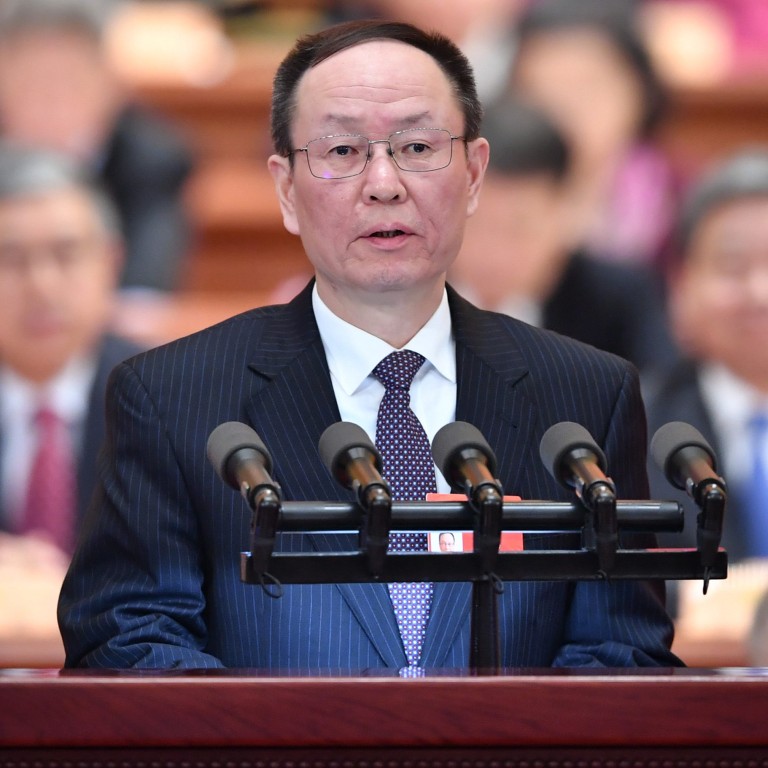
China GDP: avoiding ‘middle-income trap’ is key in 2023, and 5 per cent economic growth possible, Beijing adviser says
- Prominent economist Wang Yiming’s projection is at the high end of expectations among analysts, and it comes with conditions and concerns
- To reach Beijing’s goal of doubling per capita GDP by 2035, Wang says China’s annual economic growth rate ‘should be no less than 4.73 per cent’
And the growth rate of the world’s second-largest economy next year could potentially surpass 5 per cent, said Wang Yiming, vice-chairman of China Centre for International Economic Exchanges.
But for this to happen, coronavirus disruptions must be mitigated or ended; government policies to boost the economy must be effective; and reform and opening up must be expedited to improve market confidence, he said on Wednesday at an event organised by the Hong Kong Institute for Monetary and Financial Research.
China’s current economic growth rate is lower than its potential. This may lead to some medium- to long-term impacts, which are rather structural in nature
“China’s current economic growth rate is lower than its potential. This may lead to some medium- to long-term impacts, which are rather structural in nature,” Wang warned.
“For example, there are changes in the micro scene, such as enterprise decisions becoming more short-term in nature, risky investment appetite being reduced, and household consumption becoming more prudent.
“It takes some time for all of these to be rectified.”
While the current recovery momentum is still weak, it is “very important” to bring the economic growth back to a reasonable range, explained Wang, who has also served as vice-president of the Development Research Centre of the State Council.
Economists with investment banks Goldman Sachs and UBS expect China’s gross domestic product (GDP) to increase by 4.5 per cent in 2023. Those at Nomura were slightly more conservative at 4.3 per cent, and Morgan Stanley’s team was more optimistic with their 5 per cent projection.
Beijing’s economic advisers issue GDP growth warnings as restlessness rises
If China aims to fulfil its target of reaching the per capita income level of a medium-developed country by 2035 – with a per capita GDP of at least US$20,000 – the annual GDP growth rate should be no less than 4.73 per cent, Wang said while noting that this could be “very difficult” to achieve due to the nation’s ageing population.
As China’s per capita GDP exceeded US$10,000 two years ago, it is in the process of moving from middle- to high-income, which is a special phase of instability, and the country may become caught in the middle-income trap if economic growth stagnates, he added.
To avoid being in such a perilous position, in which growth slows and a nation becomes unable to generate further economic momentum or grow rich, the key is to increase productivity and unleash the vitality of the market, Wang said.
If consumption is not activated and exports are falling, it will be difficult to maintain the balance between the supply and demand ends of the economy
“These are unlikely to be achieved simply through countercyclical adjustment policies. It must be achieved through deepening reform and opening up,” he added.
In particular, China should enhance market-oriented reforms in the realms of labour, land, capital, technology and data.
Reviving consumption is “particularly important” for China’s economic recovery, especially as dwindling external demand has suppressed exports and manufacturing investment, Wang said.
‘All-round development’ a must as China balances Xi’s high-quality growth goal
“In the past three years, we have taken many measures to protect the 160 million market players, and the recovery of production is obviously better than the recovery of consumption,” Wang said.
“So, if consumption is not activated and exports are falling, it will be difficult to maintain the balance between the supply and demand ends of the economy.”

